Sponsored Post By Chuck Bennett
Founder & CEO of Zymöl
We are the most auto-mobile people on the planet so washing our cars is the simplest, and most effective way to protect our investment and, if we are smart, we won’t damage our car!
“The most damage done to a loved automobile is improper washing by its owner!”
Unless you do the job right you risk harming the finish of your fine car. Here are the real directions on how to “wash your car…safely.”
The Tools:
Soap: This is where you need to be smart. There are many different products that claim to be ‘car wash’ but most are strong detergents and not soaps.
Sponges: Not kitchen or an heir-loom sponge but a big new closed cell sponge is best.
Bucket: At minimum a 5-gallon bucket providing a stable drop zone (I’ll show you later)
MicroWipe or Cotton Towels: New MicroWipes or very old Towels washed without fabric softener.
Soaps = Good
Detergents = Bad
Detergents are often sodium salts of long chain alkyl hydrogen sulfate or a long chain of benzene sulphonic acid. Not exactly what you want on your beautiful paint.
Then there are detergents with Silicones in an emulsion advertised as “Wash & Wax”.
In order to get Silicone to adhere to your paint during the wash cycle a Silicone of micro-size beads or Centistokes is used to not only adhere to your paint but to enter the surface.
And of course, there is the favorite grab-and-go product, Dish Detergent…..which is designed to remove Fats and Oils. Guess what the best Waxes and Glazes are made from? Yep, that’s right, fats and oils.
Pro Tip: Add 2 tablespoons of Salad Oil to your wash bucket when adding your Soap. The Oil breaks into millions of bead-lets that cling to contaminants letting you slide them off the car not drag them off the car.
The Sponge
A closed Cell Sponge is exactly that. The cells are closed and resist sand and silt.
A Sea sponge was once a living creature at the bottom of the ocean that was used by many animals to rest on or in and to provide a soft birthing location for shellfish. Sea sponges inherently trap sand, shells, and salt which when used on your paint will leave scriptures that archaeologists in 2,000 years from now will try to decode.
And, a synthetic or wool wash mitt traps the dirt, sand, and grit from the last time you used it and competes very well with the Sea sponge’s paint scripture.
The Bucket: Not a hand-me-down from the hall closet or a kitchen pot but a real 5-gallon bucket.
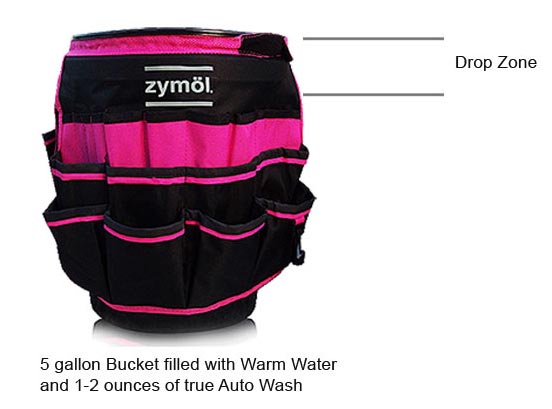
The Drop Zone is an all-important area at the top of the bucket. It is the place where your Closed Cell Sponge floats while you squeeze it to remove any collected dirt or silt which will drop to the bottom of your bucket and not be brought back to your car.
MicroWipes and Towels:
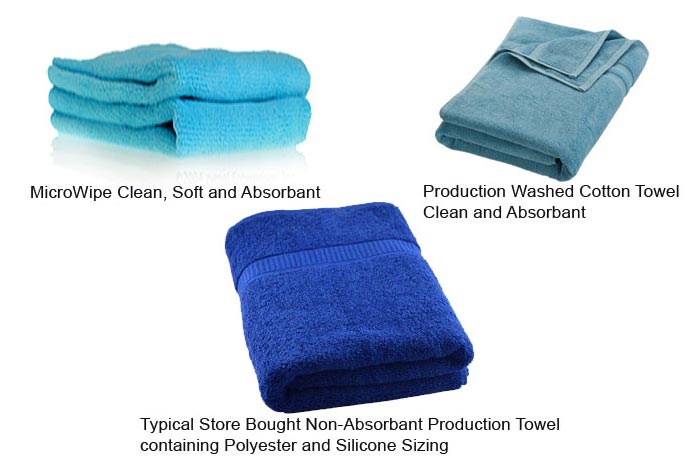
Finding the right MicroWipe Towels is a challenge. Most are made for Polyester and Polymide which are coarse and scratchy. Use only intentionally soft weave MicroWipes or ones that are made from nylon and nytril.
Towels are another challenge since 99% of the towel manufacturers towel dye, not yarn dye. This leaves the new towels with excess dye which is removed by factory washing. Unfortunately, the towel manufacturing marketing departments have an issue with a towel that feels washed out so production bathes the towels in a product call Sizing which is a Polyester-Silicone rinse that fluffs up the towel making it feel new but unable to absorb water. And it deposits the silicone on your car’s finish.
Have you ever tried to dry off from a shower only to feel the towel didn’t work and your skin is itchy?
Find Production Washed Towels or raid the linen closet for old towels. Wash them in hot water, then a hot water rinse and NO fabric softener which is again silicone.
Water: Lots of luke-warm, clean, filtered if possible from a hose without a sprayer. Do not use any pressure. Gently Cascade water over your car.
OK we have our tools now for the Rules:
Always, always, always remove any jewelry, watches, chains, belt buckles, and never wear jeans with riveted pockets or seams. Wear a loose shirt that covers front snaps and any zippers.
Never wash the car in direct sunlight as the UV can dry areas faster than you can wash them.
Always, always, always wash your car starting at the top and work down.
Rinse with clean water before washing. Dilute acid rain, road salt, and other foreign materials that may be clinging to the car.
Don’t wash the car after it’s baked in the sun all day. The cool wash water will cause the car’s metal or fiberglass to contract faster than the paint, resulting in tiny cracks, fissures, and crazing of the paint surface.
Don’t wash your car outside in freezing weather as the paint will expand faster than the metal or fiberglass and there is a very real possibility of cracking your windshield due to the abrupt temperature change.
Don’t scrub the surface. Gentle treatment with the right Soap will get the dirt off just as fast, without scratches or abrasions.
Avoid commercial automated car washes. Do not use high-pressure air and water systems. These will take the paint off with the dirt.
Don’t dry the car by open-air driving. Soap and hard water residue will leave stains.
Push the water off with a clean wet Microwipe then dry MicroWipe or Cotton Towel dry.
Always remove brake dust. (This will be the subject of future articles.)
Wash your car often. Protect your investment, do it frequently to maintain the car’s luster.
The finish on your car is the result of a long process of engineering the right products, preparing the surface, applying the best base coat, then applying several paint color coats and a clear-coat or tinted color coat.
Car Paint is a very expensive manufacturing process designed to keep your car looking new even when it isn’t. Respect the factory by protecting their work.
The technique (as important as the right materials and tools)
Rinse then Rinse again.
Whenever you wash any part of your car whether it’s the roof or a fender, rinse the entire car.
Two Hand Washing:
Your Hand is more important than the Sponge.
Once your Closed Cell Sponge is full of fresh soap and water, squeeze it out over the surface you intend to wash and using your bare hand gently rub the surface looking for insect tar, small stones, tree sap, anything that can damage your paint. Remember the Sponge has your hand insulated by 3 inches off of the paint so you don’t know what is on the car unless you use your bare hand FIRST to remove it!
Remember you are working top-down. (Never start at a rocker panel and work up.)
Then load up the sponge again and gently rub the surface with more soap and water.
Then rinse….not the area you just washed but the entire car.
Split the car into manageable sections. Start with ½ of the roof then move to ½ the windshield, the side lite then ½ the rear window.
Wash ½ the hood and the connecting fender.
Rinse the car then, Drop Zone Clean and Fill your Sponge
Move to the other side and repeat.
Wash ½ the trunk and the connecting fender.
Move to the other side and repeat.
Rinse the car then, Drop Zone Clean and Fill your Sponge
Continue with the door(s) on one side but do not go below the ‘belt line’.
Rinse the car then, Drop Zone Clean and Fill your Sponge
Do the opposite door(s) but not below the ‘belt line’.
Rinse the car then, Drop Zone Clean and Fill your Sponge
Now refresh your wash water, add new Soap and start with a clean Closed Cell Sponge
Wash the front bumper assembly and the rear bumper assembly.
Rinse the car then, Drop Zone Clean and Fill your Sponge
Wash each quarter panel.
Rinse the car then, Drop Zone Clean and Fill your Sponge
Move to the other side of the roof and start over washing the same body parts on this side.
Rinse the car then, Drop Zone Clean and Fill your Sponge
Rinse the car, then use a wet MicroWipe to ‘Push’ the water off of the car.
Chamois are perfect for this task but REAL Cod Tanned Chamois belly skins are no longer available since the Chamois Antelope has been hunted to a point where they are strictly protected in the EU under the European Habitats Directive.
Once the majority of the water has been pushed off of the car then using either a dry clean MicroWipe or a pre-washed Cotton Towel gently dry the outside of the car.
Using a MicroWipe open the doors, hood, and trunk to dry the door jams and inspect all weatherproofing and seals.
Now is also a good time to inspect the interior and look at the engine bay for any obvious leaks or damage.
If you have followed my directions you now have a clean car that you have personally inspected, cared for, and approved.
If you would like more car care directions like Paint Cleaning, Waxing, Glazing, Wheel Care, and Interior Care please let us know and we will send the articles to CorvetteBlogger.
Well, got to run…I have a date with a Wash Bucket!
Chuck
Founder & CEO of Zymöl
Source:
Zymöl
-

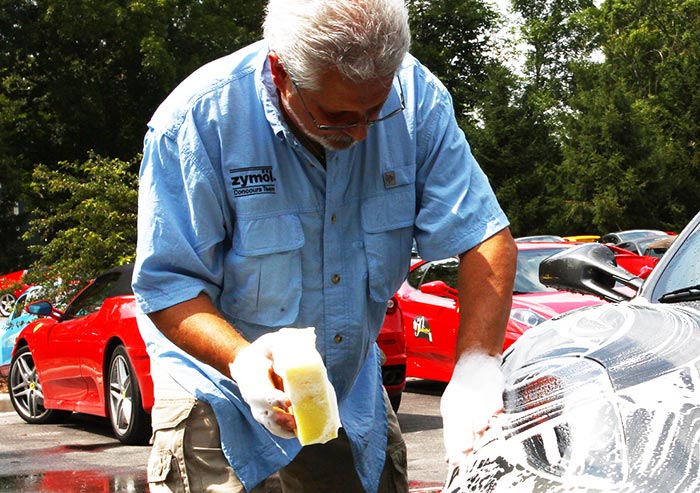
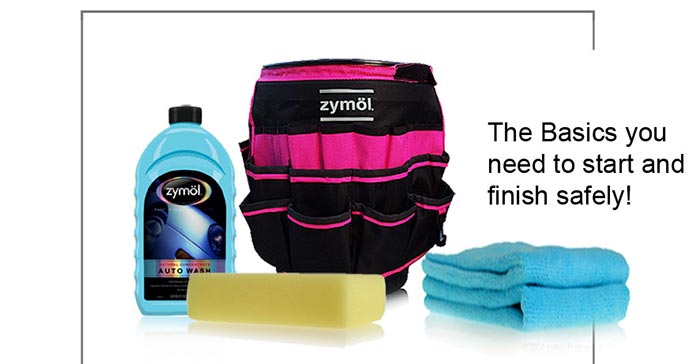
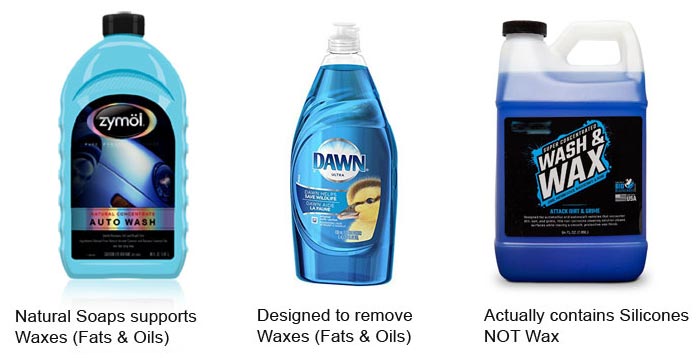
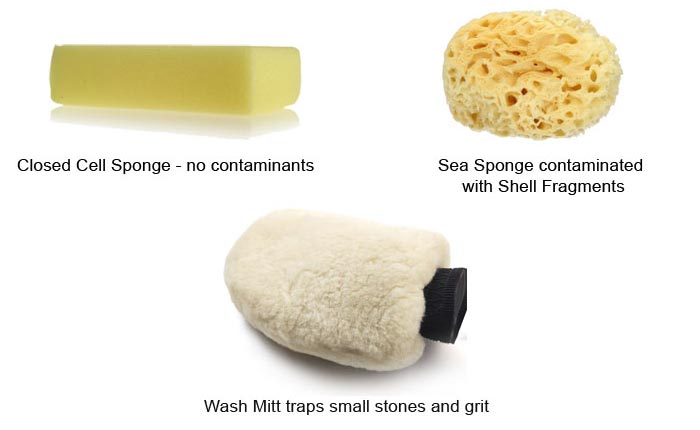
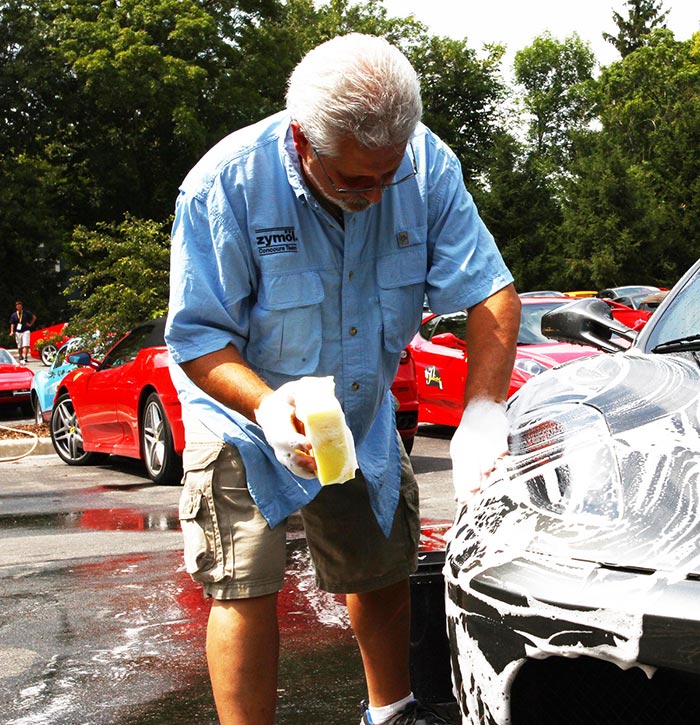


![[PODCAST] CORVETTE TODAY #210 – Celebrating 50 Years of the NCRS [PODCAST] CORVETTE TODAY #210 - Celebrating 50 Years of the NCRS](https://www.corvetteblogger.com/images/content/uploads/2024/04/042224_1-218x150.jpg)
Honestly, a lot of this should be common sense. If people would just do one thing, it would be to eliminate that circular washing, drying and polishing that so many do. Just stop that, and your car will look better. I use a clean microfiber towel set each time. I don’t like sponges and really do not like chamois. The rest of the suggestions are good.
All good and correct agreeable comments except I believe a soft microfiber fingers mitt is better and softer on the paint than the closed cell sponge and the sponge has a flat formed wipe area that can easier collect dirt than the multi fingered micro mitt we have here. No scratches no swirl marks ever.
This is good advice, but a bit over the top. I use a microfiber mitt vs. a sponge, as long as you are very careful about double rising this works great. Only a non car person would ever use dishwashing liquid!
Too many steps.
This is pretty good information. I have professionally detailed cars for years and have never used a pressure washer on paint except for nasty brake dust on wheels and the completely dumb carpeted floor mats used by every car maker today. The safest way is to let the water just flow onto the paint, not blast it at 1,200 psi. If you watch the so called popular detailers on YouTube, almost all of them use a pressure washer on the paint cleaning some dusty barn find that sat for 40 years. NO. Bad. High volume pressure drives that very dirt into the finish. No wonder they are then spending 10 hours compounding and polishing the car they just ruined. Idiots. Yes, this Zymol CEO is a little over the top, but truth be told he has better tips than most of the YouTubers who have almost become celebrities because most people today are too stupid to believe a guy who has his own line of car care products.
dry car with LEAF BLOWER. use SWISSVAX. if no blower available drive at 98 MPH depending on car for a speedy dry.
i got busted once and i told cop i was drying my car. he said enjoy your 50 dollar car wash as he handed me the speeding ticket…
Comments are closed.